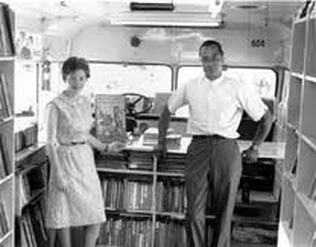When I was quite young, we were a single-car family. My father worked elsewhere and “hobby” farmed. My mother was home with us eight—yes, count them—eight children. (Eight “girl” children, to be exact!) As you might expect, this meant that we did not often go places. Entertainment was found in our own backyard, creating stories that we sometimes acted out, encouraging the few other neighborhood children there were to engage with us in our make-believe escapades. One of our favorite pastimes was to play “Harriet the Spy,” a game (obviously) named from the book of the same title. With our notebooks in hand, we would try to creep up unaware on one another, taking notes of what they were doing, leaving behind little tidbits for other to find. . . . Finding someone’s notebook unattended offered a plethora of fascinating information about the antics of others. From whence did ideas of this ilk come? Reading—of course. And, where better to pick up those ideas from the books we checked out from the bookmobile that made its way to our little community from time to time?
In very early days, some book collections traveled by horseback. By 1900 some libraries sent books by mail to those who could not even reach the traveling collections. Then came the first motorized bookmobile in 1912. In 1929 the term “bookmobile” was coined. Check out these statistics: in 1950, there were about 600 bookmobiles; by 1956, over 900; by 1970, over 2000. As might be expected, when fuel costs increased, the number of bookmobiles decreased. By 1990 there were only about 1100 remaining and by 2000, there were fewer than 900—roughly the same number as in 1956.
I think of children today who do not have libraries near them and wonder how many budding geniuses, how many creators of their own stories that could be shared with the world might be lost with the demise of the bookmobile. For my part, I will always hold dear memories of those sticky hot summer days when my sisters and I would heed the call: "The Bookmobile is Here!”



